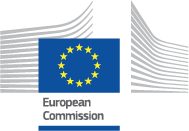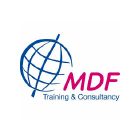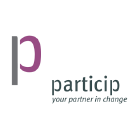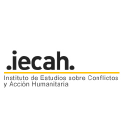WORKING WITH DG ECHO AS AN INTERNATIONAL ORGANISATION | 2014 - 2020
10. FINANCIAL OVERVIEW OF THE ACTION
1. General information
2. Humanitarian organisation in the area
3. Needs assessment and beneficiaries
4. Logic of intervention
5. Quality markers
6. Implementation
7. Coordination
8. Monitoring and evaluation
9. Visibility
10. Financial overview of the action
11. Request for derogation
12. Administrative information
13. Conclusions and humanitarian organisation’s comments
Logframe Overview
10.1 EXPENDITURE
In this table the partner needs to provide the estimated total direct eligible costs and indirect costs (remuneration costs for IOs and UN).
These amounts are extracted from the financial statement presented in the annex requested under section 10.2. The indirect costs cannot be higher than 7% of the direct eligible costs. If the Action includes contributions by beneficiaries, these contributions cannot be taken into account for the calculation of the indirect costs.
10.2 PERCENTAGE OF DIRECT ELIGIBILE COSTS ALLOCATED TO THE SUPPORT COSTS
In this section the Partner provides a more detailed breakdown of direct eligible costs in order to include the support costs.
The Partner will have to indicate % value of direct eligible costs allocated to supports for the respective action stage (RQ/MR/IR/FR).
The following definitions can help you to easier understand/distinguish the differences between various cost categories:
-
direct costs: directly incurred to fund the activities described in the SF as necessary to the achievement of the results.
-
indirect costs : unless otherwise specified in the specific grant agreement, eligible indirect costs are declared on the basis of a flat rate of 7% of the total eligible direct costs unless it is the policy of the Humanitarian Organisation to claim a lower percentage of indirect costs. (remuneration costs for IOs and UN)
-
direct support costs: costs under this title are also considered direct costs.
Direct suport costs include field office costs, in particular:
- staff costs not delivering directly goods and services to the beneficiaries;
- running costs;
- local transportation to carry all necessary goods and material for the operation;
- distribution, storage and daily labour;
- security;
- feasibility, needs assessment and other studies;
- quality and quantity controls;
- external evaluation;
- insurance costs;
- visibility and communication programmes, etc.
THE FINANCIAL STATEMENT ANNEX
The financial statement annex is a compulsory annex (in the simplified Single Form, this annex is optional). It consists of a more detailed financial breakdown.
A template of the financial statement is provided below. However the partner can use its own internal financial reporting formats provided that the requested information is provided.
The partner must provide information at least up to sub-heading 3 (see the example hereafter). In addition, the table must at least include the description of the expenses, the total budget in EUR, the allocation per result and, if available, a reference to the ledger codification.
The financial statement should give a reasonable representation of the financial resources invested in the Action. When applicable, it should include the expenses managed by the implementing partners. In such a case, the codification of the ledger should include the codification of the implementing partner, when available.
The allocation per result is to be presented as a percentage and is limited to the main headings (e.g. HR). This information is one of the elements that allow ECHO to assess the cost-efficiency and cost effectiveness of the Action. One column may be reserved to indicate the percentage of expenses that are not attributable to a specific result. This estimated allocation per result should not necessarily be provided for actions presented by niche NGOs (e.g. telecom, demining, etc.) and for actions of less than EUR 500,000.
A template of the financial statement is provided, to guide the partners on the level of information required by DG ECHO. The use of this template is optional.
10.3 FUNDING OF THE ACTION
This section provides a picture of the various sources of financing. The table will be updated at interim and final stage.
-
Direct revenue of the Action: This source of funding is quite exceptional and occurs when the Action itself creates income. In such cases, the final amount has to be mentioned here. As this will be accounted for as income, it can increase the overall amount of the Action. At the proposal level, the partner can introduce an estimated amount if known. At the final report stage, this income will be deducted from ECHO's contribution.
-
Contribution by applicant: if the Organisation makes a contribution to a certain portion/percentage of the costs of the Action, it will mention here the foreseen amount.
-
Contribution by other donors: it gives an indication of the approved and/or expected funding by other donors. At the final report stage, this information is based on real contributions.
-
Contribution by beneficiaries: These types of contribution are usually linked to cost recovery schemes. They cannot be accepted as co-financing. At proposal stage, these amounts should not be mentioned in section 10.3 as it is not certain that the cost recovery will be successful. The Specific Grant Agreement will provide in Article 6.1 that the Partner established a cost-recovery system and that the amounts recovered must be directly reinvested into the Action. These contributions will not to be taken into account for the calculation of the indirect costs, as the objective of the amounts recovered is to be reinvested in the Action.
-
Contribution requested from ECHO: The expected funding from ECHO. This needs to be equal to the amount foreseen in the Agreement at the moment of its signature.
-
% of total funding: it is automatically calculated by the system. In case the percentage is equal to 100%, the partner will have to provide a justification in section 10.4.
-
Total funding: it is automatically calculated by the system and should be equal to the total costs of the Action mentioned under section 10.1.
10.4 EXPLANATION ABOUT THE 100% FUNDING
The partner has to justify the exception to the principle of co-financing and has to select between “urgent action ” or “forgotten crisis”, which are in general the main reasons for 100% funding. In case neither of these two options applies, the partner has to select the option “other” and to provide a short explanation that justifies the need for 100% funding.
This section has to be filled in only when ECHO funding, as a percentage of the total funding, is equal to 100%.
10.5 CONTRIBUTION IN KIND
When relevant, the partner has to provide here information on major in-kind contributions. This allows crosschecking when in-kind contribution comes from other donors and whether the objective/results can be achieved when no expenses are foreseen for goods.
In-kind contribution (such as volunteers, goods, equipment received for free) cannot be considered as contributions by the applicant in case of co-financing. They can be described here to explain how they contribute to the success of the action, but they cannot be included in the total amount of the result nor in the financial statement.
10.6 CO-FINANCING BY OTHER DONORS
The partner will briefly explain, when applicable, what will be the fall-back position in case of rejection of the funding request submitted to other donors. In particular, additional explanations will be provided on whether this could lead to requesting more funding to ECHO or to reducing the volume of activities.
10.7 VAT EXEMPTION GRANTED
The default option is set on “yes”.
If the partner already knows that the VAT exemption request has been rejected, the option “no” has to be selected. In this case, the costs provided in the budget will have to include VAT.
If the partner has selected the option “do not know yet”, additional explanations need to be provided in the text box below on what actions have been or will be taken with the national authorities in order to obtain the VAT exemption.






